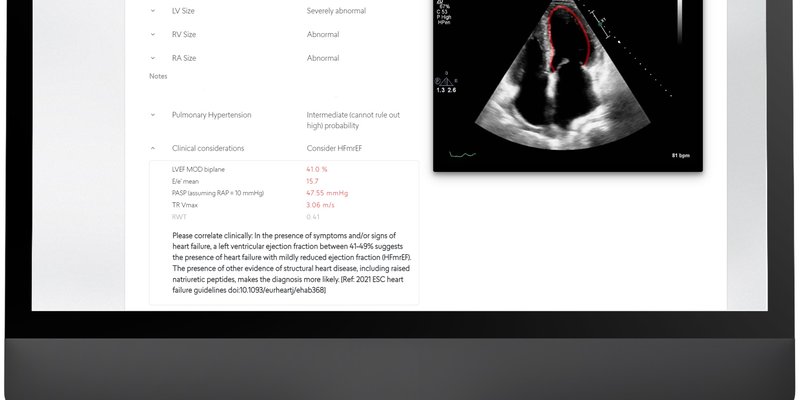
Company: Us2.ai Product: Us2.v1
Artificial intelligence-assisted automated heart failure detection and classification from electronic health records
ESC Heart Failure, 2024
Abstract
Aims
Electronic health records (EHR) linked to Digital Imaging and Communications in Medicine (DICOM), biological specimens, and deep learning (DL) algorithms could potentially improve patient care through automated case detection and surveillance. We hypothesized that by applying keyword searches to routinely stored EHR, in conjunction with AI-powered automated reading of DICOM echocardiography images and analysing biomarkers from routinely stored plasma samples, we were able to identify heart failure (HF) patients.
Methods and results
We used EHR data between 1993 and 2021 from Tayside and Fife (~20% of the Scottish population). We implemented a keyword search strategy complemented by filtering based on International Classification of Diseases (ICD) codes and prescription data to EHR data set. We then applied DL for the automated interpretation of echocardiographic DICOM images. These methods were then integrated with the analysis of routinely stored plasma samples to identify and categorize patients into HF with reduced ejection fraction (HFrEF), HF with preserved ejection fraction (HFpEF), and controls without HF. The final diagnosis was verified through a manual review of medical records, measured natriuretic peptides in stored blood samples, and by comparing clinical outcomes among groups. In our study, we selected the patient cohort through an algorithmic workflow. This process started with 60 850 EHR data and resulted in a final cohort of 578 patients, divided into 186 controls, 236 with HFpEF, and 156 with HFrEF, after excluding individuals with mismatched data or significant valvular heart disease. The analysis of baseline characteristics revealed that compared with controls, patients with HFrEF and HFpEF were generally older, had higher BMI, and showed a greater prevalence of co-morbidities such as diabetes, COPD, and CKD. Echocardiographic analysis, enhanced by DL, provided high coverage, and detailed insights into cardiac function, showing significant differences in parameters such as left ventricular diameter, ejection fraction, and myocardial strain among the groups. Clinical outcomes highlighted a higher risk of hospitalization and mortality for HF patients compared with controls, with particularly elevated risk ratios for both HFrEF and HFpEF groups. The concordance between the algorithmic selection of patients and manual validation demonstrated high accuracy, supporting the effectiveness of our approach in identifying and classifying HF subtypes, which could significantly impact future HF diagnosis and management strategies.
Conclusions
Our study highlights the feasibility of combining keyword searches in EHR, DL automated echocardiographic interpretation, and biobank resources to identify HF subtypes.
Read full study